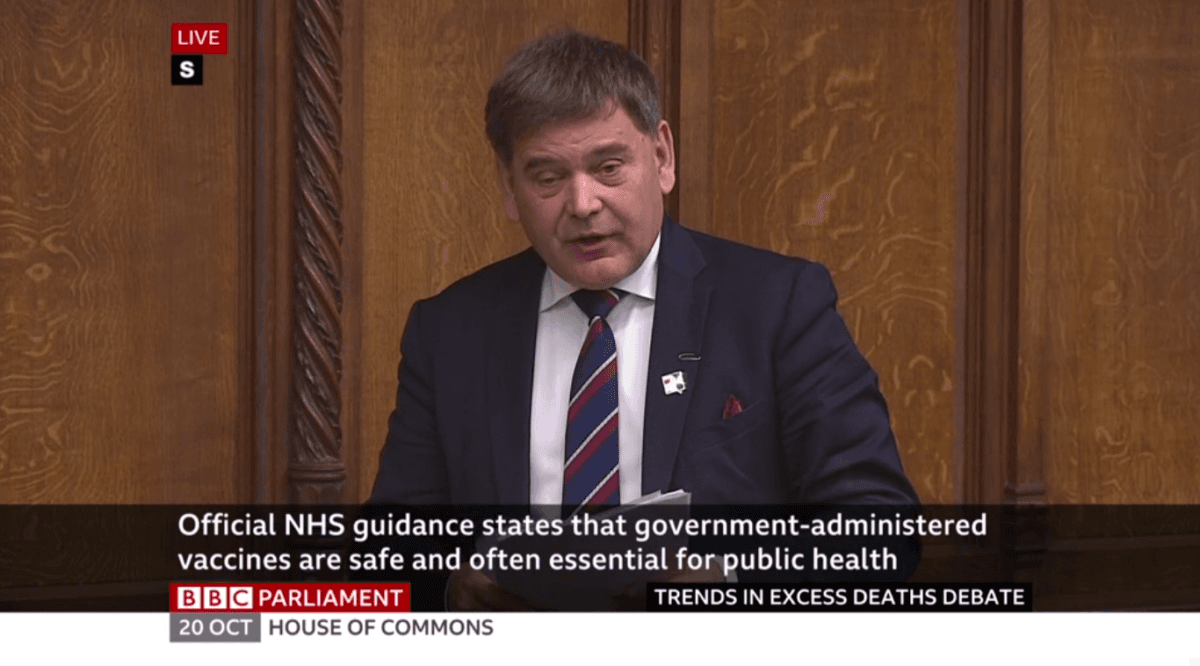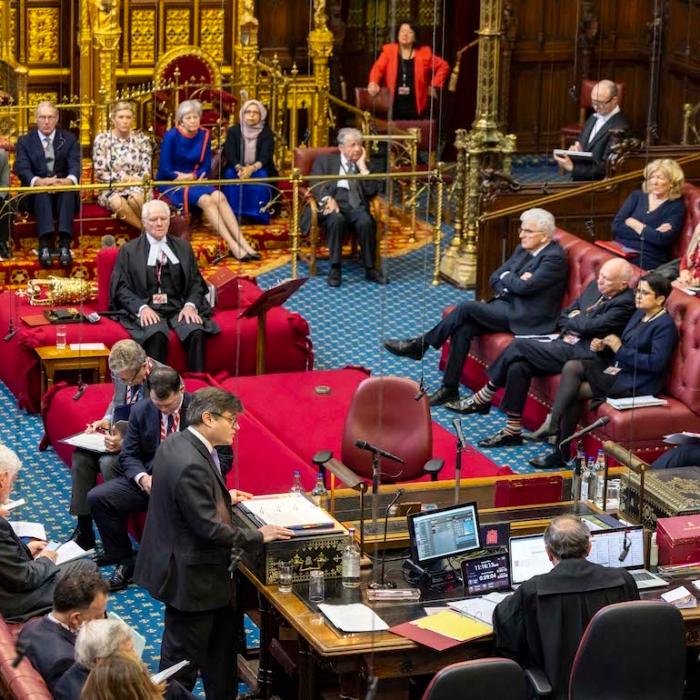The Office for National Statistics (ONS) announced a change in how it calculates excess death rates, leading to a reduction of 65 percent in last year’s figure.
The high mortality rate over the past two years has led to debates in Parliament and calls for an inquiry as to why excess deaths in younger age groups had reached 12–13 percent, with the overall excess death rate standing at around 6 percent using the old method of calculation.
Previously, figures were calculated based on how deaths compared to the five-year average, without taking into account changes in population.
‘The Easiest Way to Manipulate Results’
He said on social media platform X that the ONS has been “massively underestimating” the population for years because of factors including illegal immigration, and that by deciding to account for those previously unaccounted for people, this would be an effective way to suddenly lower the excess death rates.He said: “The biggest problem with excess deaths estimates - and the easiest way to manipulate the results - relates to ‘unknown’ population changes.
“On the assumption that the deaths of even previously unaccounted for people do get registered, this means that the baseline number of deaths per 100,000 people has been consistently overestimated because the denominator is underestimated.
“If you suddenly decide (as I believe the ONS did recently) that the population is bigger than you thought it was and apply that new population total only to the recent excess deaths estimates then it is inevitable you will revise excess death numbers downward.”
Mr. Fenton added that he has always said that excess deaths are a “problematic measure.”
Oldest ‘Baby Boomers’ Reaching Life Expectancy
Jamie Jenkins, a former ONS statistician, said on X that the numbers used by the body had been “unfit for purpose for a while.”“The old method weren’t [sic] great. We got thousands of people who were born after the second world war, known as the baby boomers, and a massive bulge in the population, hitting around life expectancy.
“So if you count how many deaths you see at the moment versus, say an average of five years before the pandemic, you get massive excess, mainly among older people. You need to adjust for this demographic shift.”
He said that many people posting online about excess deaths “don’t take into account this significant population boom that’s now dying.”
But he added that even when the ageing demographics were accounted for, “there are still higher than expected deaths among younger age groups.”

Jason Oke, a statistician at Oxford University, welcomed the change in methodology as “long overdue,” and said the figure had been overestimated both during the COVID-19 era and since, with the public becoming more interested in the figure.
He said in a statement: “The excess death statistic rose from relative obscurity to prominence during the pandemic, putting it firmly in the public consciousness.
“This however also exposed the flaws in the way it had been calculated – using historic averages – taking no account of prevailing trends or changes in the population. As a result, excess deaths were overestimated before, during and after the pandemic.
“Later corrections, intended to mitigate the effects of the pandemic, served only to accentuate the bias, leading to significant overestimation of the number of excess deaths in the post-pandemic period.”
Number of Deaths in Lockdown Era Also Revised Down
Sir David Spiegelhalter, emeritus professor of statistics at the University of Cambridge, said in a statement there is no “correct” method for assessing excess deaths, but welcomed the new “solid and model-based” methodology, which he said was in contrast to the “rather ad-hoc method” used before.He said the new method “produces rather different, but more reasonable, pre-Covid-19 estimates, although the estimates for the Covid-19 period are not changed substantially.”
“This is world-leading methodology, setting an appropriately high standard for national statistics.”
Daniel Ayoubkhani, head of health statistics at the ONS, said in a statement: “Using our new methodology, today’s release shows tragically that there were an estimated 11,000 excess deaths in 2023. This is lower than our previous estimate because our new method accounts for the growth and ageing of the population.
“These are key factors in understanding how many deaths we would expect to see and whether the actual number of deaths is below, or above, this estimate.”
He said the new figures showed there were actually negative excess deaths in the last few months of 2023, meaning fewer deaths than average were being registered.
“The new method has also revised down the number of excess deaths during the first pandemic year, from 84,064 to 76,412. The highest number of excess deaths estimated by the new method over the nine years before the Covid-19 pandemic is 30,858 in 2015.”
The new figures are at odds with those produced by the Institute and Faculty of Actuaries Continuous Mortality Investigation, which found the excess deaths to be 22,000 when adjusted for the ageing population, which is more than double the ONS revised figure.
The ONS said it was using a different baseline from that of the institute.
The government minister Lord Evans said in response that various factors could explain the excess deaths, including flu, the impact of COVID-19, and continued prevalence of conditions such as cardiovascular disease.







